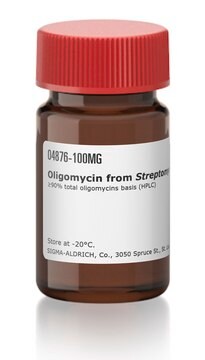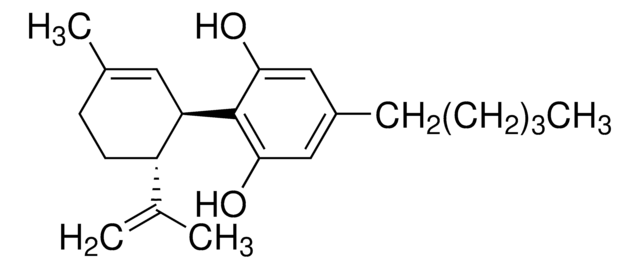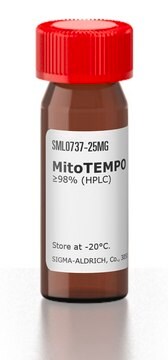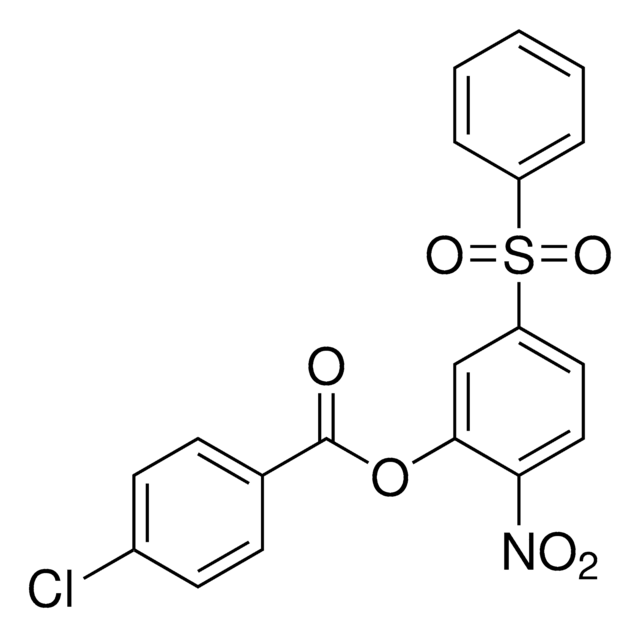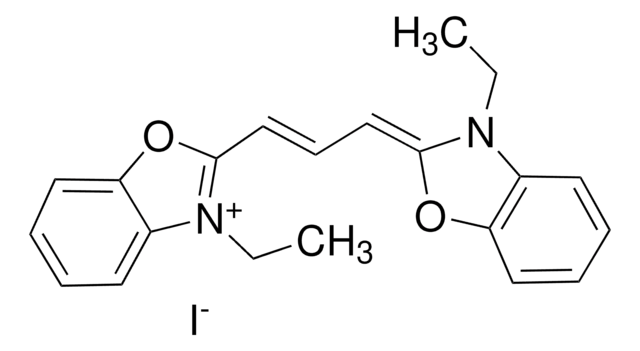C2759
Carbonyl Cyanide m-Chlorophenylhydrazone
≥97% (TLC), powder, mitophagy inducer
Synonym(s):
m-Cl-CCP, CCCP, Mesoxalonitrile 3-chlorophenylhydrazone
About This Item
Recommended Products
product name
Carbonyl cyanide 3-chlorophenylhydrazone, ≥97% (TLC), powder
Quality Level
Assay
≥97% (TLC)
form
powder
color
yellow to orange
solubility
DMSO: 100 mM
storage temp.
−20°C
SMILES string
Clc1cccc(N\N=C(\C#N)C#N)c1
InChI
1S/C9H5ClN4/c10-7-2-1-3-8(4-7)13-14-9(5-11)6-12/h1-4,13H
InChI key
UGTJLJZQQFGTJD-UHFFFAOYSA-N
Looking for similar products? Visit Product Comparison Guide
Application
- in the inhibition of efflux pump in clinical Pseudomonas aeruginosa
- to inhibit oxidative phosphorylation activity of mitochondria in human Beas-2B bronchial epithelial cells
- to prepare carbonyl cyanide m-chlorophenylhydrazone solution for oxidative and mitochondrial stress assay and mitophagy induction in Caenorhabditis elegans
Biochem/physiol Actions
Signal Word
Danger
Hazard Statements
Precautionary Statements
Hazard Classifications
Acute Tox. 3 Dermal - Acute Tox. 3 Inhalation - Acute Tox. 3 Oral - Eye Irrit. 2 - Skin Irrit. 2 - STOT SE 3
Target Organs
Respiratory system
Storage Class Code
6.1C - Combustible acute toxic Cat.3 / toxic compounds or compounds which causing chronic effects
WGK
WGK 3
Personal Protective Equipment
Certificates of Analysis (COA)
Search for Certificates of Analysis (COA) by entering the products Lot/Batch Number. Lot and Batch Numbers can be found on a product’s label following the words ‘Lot’ or ‘Batch’.
Already Own This Product?
Find documentation for the products that you have recently purchased in the Document Library.
Customers Also Viewed
Our team of scientists has experience in all areas of research including Life Science, Material Science, Chemical Synthesis, Chromatography, Analytical and many others.
Contact Technical Service


